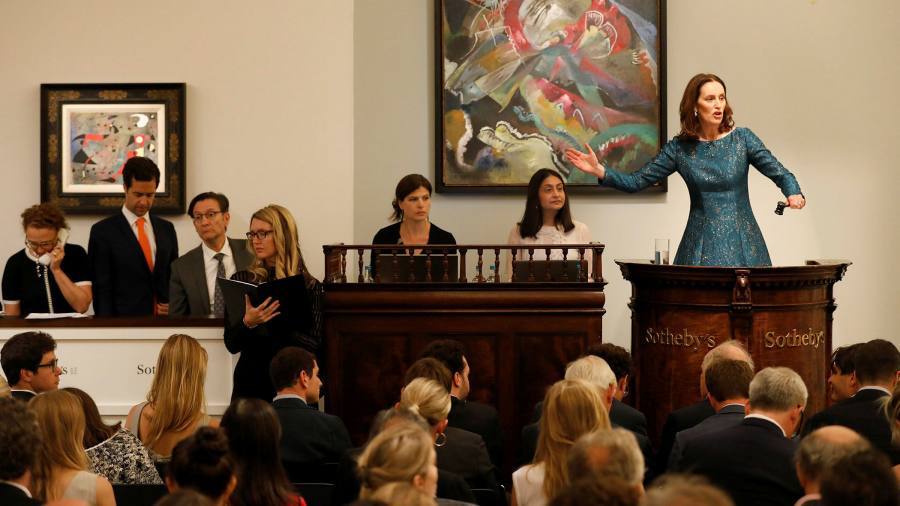[ad_1]
The art market’s high rollers have created a serious image problem for themselves. Over the past 30 years, and particularly at the beginning of this century, they sold the story of mystery international billionaire buyers and their glamorous hangers-on at flashy evening auctions. Answering slight nods in packed sale rooms, mellifluous auctioneers would post gasp-inducing record prices for works by artists most middle-class people only ever see in museums.
Some of those middle-class people have day jobs as tax and bank inspectors, or as parliamentary or congressional staff. And over time, the air of secrecy and enormous wealth around the art market has attracted their closer attention.
Now the auction houses, art dealers and private advisers face the prospect of emerging from Covid-19 lockdowns only to be enlisted as enforcers of anti-money-laundering (AML) regulations as strict as those in the banking industry. They are not entirely ready for this. They signed up to be courtiers, not investigators.
By June, the UK tax authority, will require what it calls “Art Market Participants†(AMPs) to register before they continue to carry on their business, defined as “a transaction of €10,000 or more, or a series of linked transactions of €10,000 or moreâ€. In other words, every auction house, professional art dealer, art financier, or adviser better sign up.
Even though the UK has left the EU, it will continue to enforce the EU’s Fifth Money Laundering Directive. The AMPs will have to do customer due diligence (CDD) on the ultimate beneficial owners (UBOs), of the art they help buy or sell.
So even as they grovel and smile before the oligarchs, they must ask pointed questions about the source of their money.
The US authorities have not entirely made up their minds about how to bring the art world under a bank regulation-like AML regime. After this past January, the antiquities market is covered by the due diligence requirements originally written for banks, partly in reaction to Isis looting of ancient sites. Congress asked the Treasury to report by next January on how to oversee the enforcement of money-laundering rules and US sanctions in the art market.
Unfortunately for the art people, the AML and CDD checks will cost money, at a time when sales are down. According to Clare McAndrew, of Art Economics, a Dublin consultancy, global sales of art and antiques declined to $50.1bn in 2020, down 22 per cent from 2019. The peak sales year for the industry was back in 2014, when global value reached $68.2bn.
“I think the whole money laundering issue has been slightly over-egged,†McAndrew says. “This is slightly less of an issue for the auction houses, since they have been collecting this type of information for a while. But this is quite arduous for the smaller firms. The official guidelines are over 100 pages long.â€
Harry Sandick of Patterson Belknap, a New York law firm, and a former prosecutor, says: “I think the art world is not the soft spot that regulators think. Still, they want the art industry to file the same suspicious activity reports and have the same staff training as the banks.â€
I am inclined to believe that globally traded commodities, in particular gold, are better suited for money laundering than art objects. Indeed, the current NatWest criminal case centres on cash deposits by a now-defunct British gold dealer. It is much easier, after all, to identify and trace a particular painting than a particular gramme of pure gold.
Having said that, there are some highly entertaining parts of a US Senate staff report from last July on how the art industry may undermine international sanctions. Sotheby’s and Christie’s representatives dealing with an agent for Arkady and Boris Rutenberg, two internationally sanctioned Russian oligarchs, seemed more interested in keeping the business than avoiding questionable transactions.
Roland Foord, a senior partner of Stephenson Harwood, a London law firm, advises the harried art people to “keep records of your searches on (prospective customers) and of your conclusions. If you do not have the original source material for your CDD, make sure that you have the contractual right to get it.â€
So while there are plenty of art world consultants ready to help with due diligence for a few thousand a year, the art people are still on the hook with the tax people and regulators for explaining where their clients’ money comes from.
[ad_2]
Source link





